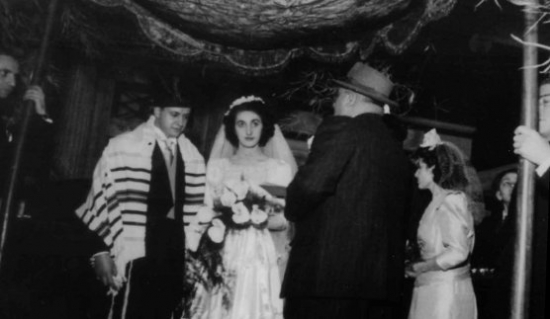
Wedding ceremony in the Ohel Rachel Synagogue 23 Jan 1951
Fifty years after she left China, Flori Cohen and her family visit Shanghai, her home town, to retrace the steps of her life and witness the amazing changes that have taken place.
My sisters and I were born and raised in Shanghai, China, and it has been our dream to visit the place of our birth. This dream was finally realized through the planning and untiring efforts of two of my grandchildren who decided that there would be no more procrastination and that we would make the trip in 2010. This was planned together with family members in Israel, the USA and Canada and finally, on July 24, fourteen of us were on our way to Shanghai.
We were all so excited and although we saw the changes in Shanghai on the Internet, we could not visualize the huge makeover of the city. When we landed in Shanghai we could not believe the extent of the changes: the many high-rises, new hotels, highways, and the new financial district in Pudong, which was once nothing but flat land with some factories. The change is truly amazing.
The highlight of our trip was the visit to the Ohel Rachel synagogue. I wanted to show my children and grandchildren the beautiful synagogue we used to go to every Sabbath and on all Jewish holidays. The visit was extremely emotional for me. In my mind I was going through video clips of my wedding, reliving every moment of that day. It was a beautiful day and a beautiful wedding – the photos I brought with me were picture proof of that occasion. We also reminisced about the High Holidays in the Ohel Rachel and we were remembering all the beautiful Sephardic prayers and tunes. I kept hearing my husband's beautiful voice, which could be heard way above the other members of the congregation.
Since my wedding to Isaiah Meyer Cohen (Shaya) was the last wedding held at the Ohel Rachel synagogue, on January 23, 1951, we requested Rabbi Greenberg to try to obtain permission from the Chinese authorities to allow me and my family to visit the synagogue. He succeeded in his endeavors, for which we are most grateful.
It was sad to see the Ohel Rachel stripped of all its original interior furnishings, but at the same time we were pleased that once again it was being used as a place of worship for the Jews who today live in Shanghai. Rabbi Greenberg mentioned that they were doing their utmost to return the Ohel Rachel to its original stature.
The day the Ohel Rachel closed its doors for the last time in early March 1952, my family and a few remaining members of the Sephardic community witnessed in great sadness the Torah scrolls being removed from the Ark, and the Ohel Rachel being taken over by the Chinese authorities.
The visit was especially meaningful for my eldest son David who was born in Shanghai at the St. Marie Hospital on Rue Pere Robert (previous street name), the same hospital where my sisters, my cousins and I were born. My children and grandchildren were thrilled with the visit to the Ohel Rachel and most impressed by the stories we shared with them of our life in Shanghai. We led a very orthodox life and we were very proud of our Jewish traditions. My mother is from the Toeg family, one of the oldest Sephardic families in Shanghai. They were closely involved in the Sephardic Jewish community and in all its activities; furthermore, my mother was very active in the committee of the Shanghai Jewish school.
We also had the opportunity to visit our last home where we lived with my Uncle Isaac Hayim Toeg and Aunt Grace and their family, on 430 Seymour Road (now Shanxi Lu), which today houses seventeen families. All the rooms have been divided into two. We met very charming Chinese families now living there who were kind enough to invite us in and let us look around. The Chinese lady who now lives in my sister's and my room on the upper floor, is an English teacher in one of the universities of Shanghai.
We were very lucky on this trip to have had an excellent guide in Dvir Bar Gal, who knew every nook and corner of Shanghai and was able to take us to all the places we wanted to see: the Ohel Rachel, our old schools, early homes, the French Club where we were members, and the Lyceum Theater where the young Sephardic committee members directed and acted in various plays, the last one being The Man Who Came to Dinner, in which my husband acted. He also played the contrabass in the Kalef Band, which included several members of the Sephardic Jewish community.
All in all this was a very exciting and successful trip which has left us with the desire for another visit, but at a slower pace so that we can take in even more all the wonderful changes in Shanghai, the city of our birth.
Family history
Both my mother's and father's side are of Baghdadian origin. During the late 1800s when the situation in Baghdad turned sour for the Jews, many members of our family fled to Bombay, India where they stayed for many years. Then my Uncle Isaac Hayim Toeg – my mother's younger brother – was offered a job in Shanghai by a member of the Sassoon family. Once settled there he sent for the rest of the Toeg family to join him in Shanghai.
Shanghai finally became the home of several families from Baghdad, many of them very wealthy. These families were members of the elite clubs in Shanghai; they owned mansions and some had their own stables and racehorses. My Uncle Isaac owned a racehorse that went by the name of Comanche. They went on paper hunts and played in polo matches. All of them also owned luxurious summer homes.
The new generation of Sephardic youth born in Shanghai in the early 1920s and 1930s, in addition to their jazz band mentioned earlier, formed their own amateur dramatic club, producing many plays, the last being: The Man Who Came to Dinner, in which Shaya (my husband) acted. In addition, the young men formed their own football team called The White Stars Football Team of Shanghai and they played in many matches. Shaya and his youngest brother Abraham were on this team.
We enjoyed a luxurious and pampered upbringing. We went to the best schools, took ballet and music lessons, and travelled abroad in style on the famous Empress Lines to Rokosan, Japan, for the summer vacation. Sometimes we travelled to other vacation spots in China such as Tientsin, Tsingtao, Pei Tai Ho, and Wusih. Very often we joined our cousins on my Uncle Isaac's houseboat on picnic trips to Hangchow.
After the marriage of my mother to Jason Isaac in 1930, and my Uncle Isaac's marriage to Grace Toeg, the daughter of his eldest brother Aslan, in the same year, the families moved to large handsome houses with beautiful gardens in Great Western Road. My early years were spent in these beautiful homes that had everything we as little children could want in the way of slides, merry-go-rounds, and swings.
When I was five, my Uncle Isaac wanted to be closer to the Ohel Rachel synagogue and hence purchased a large home on 430 Seymour Road (the same street where the synagogue is located). He moved there with his family and the family of his older brother Aslan.
At the same time my family moved to our new home at 10 Edinburgh Road where we lived until I was eight, and this was where my sister Esther was born. Around this time my parents separated, and my mother, my sisters and myself moved in with my uncle stet on Seymour Road. Luckily this was a big house with ten rooms that could accommodate all of us. This was not an easy period for us but we adjusted and settled down to a good and happy life in our Uncle Isaac's home. It was actually fun all of us living together. We had our own softball team, and acted in plays together.
In 1949 the Communists invaded Shanghai.. Over the next couple of years the Communist regime made it difficult for foreigners to continue living in Shanghai by taking full possession of our homes, businesses, schools, places of worship. The life we knew, cherished and loved was cut short forever. Like many, most of our family had no option but to leave Shanghai, the only home we knew. Some left for Israel and others for England, America, Canada and elsewhere.
Flori Cohen now lives in Modiin, Israel. She recently joined the staff of The Bulletin as an editor of the English Supplement and of the New Israel’s Messenger.
 dear editor 159 magazine
dear editor 159 magazine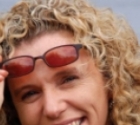 OVERNIGHT OAT & SESAME BARS
OVERNIGHT OAT & SESAME BARS IN THE SWIM
IN THE SWIM (302x450)-1451381711.jpg) Odeon Oscar
Odeon Oscar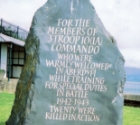 The Jewish Connection
The Jewish Connection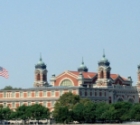 ellis island
ellis island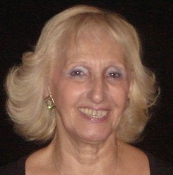 Flori Cohen
Flori Cohen